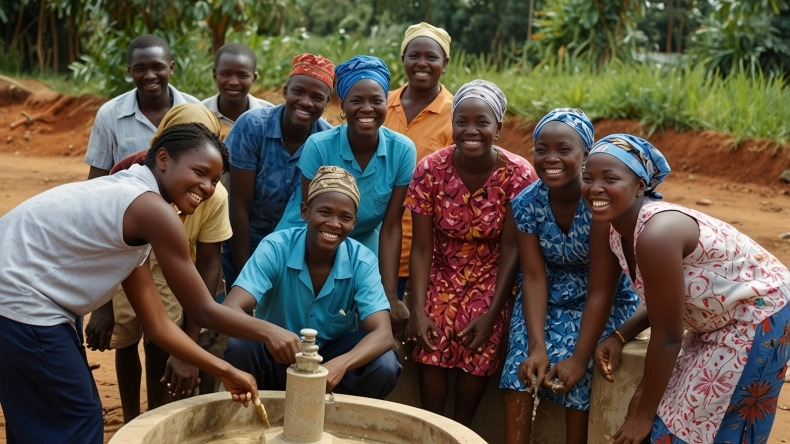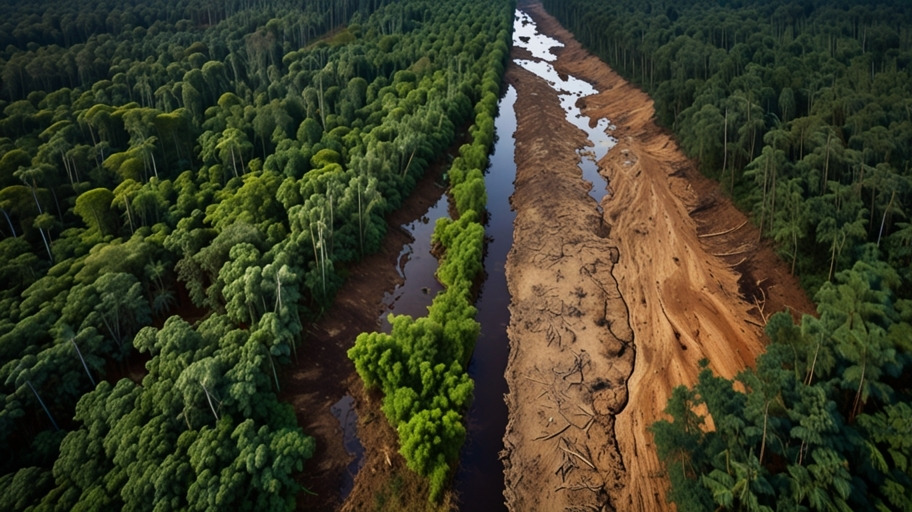Madagascar's Water Scarcity and Efforts to Improve Water Access
Madagascar's Water Scarcity and Efforts to Improve Water Access
Introduction
Madagascar, the world's fourth-largest island, is known for its rich biodiversity, unique ecosystems, and diverse cultures. Yet, despite its natural wealth, Madagascar faces significant developmental challenges, including acute water scarcity. Access to safe and reliable drinking water remains a daily struggle for many of its 28 million residents, particularly in rural areas. Water scarcity in Madagascar has serious implications for public health, economic development, and environmental sustainability. This article will explore the causes of water scarcity in Madagascar, its impacts on the population , and the efforts—both local and international—aimed at improving water access across the island.

Geography and Water Availability
Madagascar is located off the southeastern coast of Africa in the Indian Ocean, and its topography is highly diverse, with rainforests, highlands, and arid regions. This geographical diversity has a direct impact on water availability. While some regions, such as the eastern rainforests , receive abundant rainfall, others, particularly in the south, experience frequent droughts.
The island's southern region is particularly arid, exacerbated by climate change and the El Niño weather phenomenon. This part of the country, known as the "Great South," frequently suffers from prolonged periods of drought, which have worsened over the past few decades. This variability in rainfall across regions creates imbalances in water distribution, leading to scarcity in some areas and flooding in others. Coupled with poor infrastructure, this geographic challenge makes it difficult to provide a reliable water supply to the population.
Causes of Water Scarcity
The scarcity of water in Madagascar is driven by several interrelated factors, including geographic conditions, climate change, poor infrastructure, deforestation, and poverty. Below is an in-depth look at some of the main causes.
1.Climate Change and Natural Variability
Madagascar is increasingly feeling the effects of climate change. Rising global temperatures, shifting rainfall patterns, and frequent droughts, especially in the southern part of the country, have exacerbated water shortages. Climate change has caused unpredictable weather patterns, meaning the island's wet season is becoming shorter, and when the rains do come, they are often too intense, causing flash floods that do more harm than good to local water sources.
The El Niño effect also plays a critical role in disrupting rainfall in Madagascar, causing severe droughts that impact agricultural production and reduce the availability of water for both domestic and farming needs. As climate change intensifies, it is likely that the variability in rainfall will increase , further straining water resources.
2. Deforestation
Deforestation has long been a problem in Madagascar, with an estimated 90% of the island's original forests already lost. The clearing of forests, largely driven by slash-and-burn agriculture (known as “tavy”) and the need for firewood, has had extensive effects on water systems. Forests play a crucial role in the water cycle, as they help to regulate the flow of water by promoting rainfall, storing water in their roots, and preventing soil erosion. Without the forests, the island is more prone to soil erosion, leading to the silting of rivers and reservoirs. This reduces the capacity of natural water systems to store and filter water, thus worsening the water crisis.
3. Poverty and Underinvestment in Infrastructure
Madagascar is one of the poorest countries in the world, with approximately 70% of its population living below the poverty line. Poverty limits the government's ability to invest in essential infrastructure, including water systems. Many parts of the country, especially rural areas, lack basic water supply systems. Even in cities, water supply is often intermittent and unreliable.
The lack of financial resources has meant that investment in modern water management infrastructure has been minimal. For example, water pipes are often outdated, leaking, or entirely non-existent in certain areas. In rural regions, many people rely on natural water sources such as rivers, lakes, or even small ponds, which are often contaminated and unsafe for drinking. This lack of infrastructure creates a cycle of water insecurity and poverty, as people must often walk several kilometers to fetch water, cutting into time that could be spent on productive activities such as farming or schooling.
4. Rapid Population Growth
Madagascar's population is growing at an annual rate of around 2.6%, placing additional strain on already limited water resources. The high population growth rate is particularly felt in urban areas, where cities are expanding faster than infrastructure development. As more people move to urban areas in search of employment and better living conditions, the demand for water increases. This places additional pressure on water systems that are already stretched to capacity, resulting in shortages and further stressing the urban poverty.

Impacts of Water Scarcity
Water scarcity in Madagascar has wide-reaching consequences, affecting public health, economic development, agriculture, education, and environmental sustainability.
1. Public Health
The most immediate impact of water scarcity is on public health. When people do not have access to clean water, they are forced to use unsafe water sources, increasing the risk of waterborne diseases such as cholera, dysentery, and diarrhea. According to UNICEF, diarrhea is one of the leading causes of death among children under five in Madagascar, primarily due to contaminated water and poor sanitation.
In addition to waterborne diseases, the lack of proper sanitation facilities—linked to water scarcity—contributes to the spread of infectious diseases. In rural areas, less than 40% of the population has access to improved sanitation facilities. This situation not only affects people's health but also puts a strain on the healthcare system, which is already underfunded and ill-equipped to handle large-scale public health emergencies.
2. Agriculture and Food Security
Agriculture is a critical sector in Madagascar, employing about 80% of the population. However, it is highly dependent on rainfall, and the lack of water infrastructure, such as irrigation systems, makes farmers vulnerable to droughts and climate variability. The southern part of Madagascar, where droughts are most severe, has seen repeated crop failures, leading to food insecurity and malnutrition. The 2021 drought in southern Madagascar was so severe that it pushed over a million people to the brink of famine, according to the World Food Programme ( WFP).
Without access to reliable water sources, farmers are unable to produce enough food to feed themselves or generate an income, exacerbating the cycle of poverty. Food insecurity also leads to migration, as people move from rural areas to cities or other regions in search of better living conditions, further straining already limited urban water resources.
3.Education
Water scarcity also has indirect effects on education, particularly for girls. In many rural communities, fetching water is a task assigned to women and girls, who may spend hours walking to and from distant water sources. This time-consuming chore often takes precedence over attending school, leading to lower school attendance and educational outcomes for girls. Over time, this contributes to the perpetuation of poverty, as less education limits job opportunities and income potential.
Efforts to Improve Water Access
Despite the challenges, there are ongoing efforts to improve water access in Madagascar. These initiatives come from the government, international organizations, non-governmental organizations (NGOs), and private sector players. Below are some of the most significant strategies and initiatives aimed at addressing water scarcity.
1. Government Initiatives
The Malagasy government has recognized the urgency of improving water access and has outlined plans to invest in water infrastructure. In 2019, the government launched the “Water, Sanitation, and Hygiene National Action Plan,” which aims to provide universal access to water and sanitation by 2030. However, the ambitious nature of this plan requires substantial investment and international assistance to meet its targets.
In addition to national plans, the government has also worked with regional bodies to address water scarcity. For example, the Southern African Development Community (SADC) has provided technical and financial support to improve water management systems in southern Madagascar.
2. International Aid and NGO Support
International organizations, such as the United Nations, the World Bank, and various NGOs, have played a critical role in improving water access in Madagascar. The World Bank has financed projects such as the Madagascar Water Project, which aims to increase access to safe drinking water in rural and urban areas. These projects often focus on building or rehabilitating water infrastructure, such as pipelines, wells, and sanitation facilities.
UNICEF and the World Health Organization (WHO) have also been active in promoting water, sanitation, and hygiene (WASH) programs across the island. These programs focus on educating communities about the importance of clean water and sanitation, providing clean water sources, and building latrines in schools and health facilities.
One significant initiative is WaterAid's work in Madagascar. WaterAid focuses on providing sustainable water solutions, such as rainwater harvesting systems, drilling boreholes, and constructing gravity-fed water systems in rural areas. They also collaborate with local communities to ensure that water projects are maintained and managed over the long term.
3. Community-Based Solutions
Local communities play an essential role in the success of water projects. In many cases, international organizations partner with community leaders to implement solutions tailored to specific local needs. This community-driven approach ensures that water projects are culturally appropriate, sustainable, and effective.
For example, in some regions, community members are trained to maintain and repair water systems, ensuring long-term sustainability. In other cases, communities have implemented rotational water-sharing systems, allowing households to take turns accessing limited water supplies during times of scarcity .
4. Innovative Technologies
In recent years, technological innovation has become an increasingly important tool in addressing water scarcity. One example is the use of solar-powered water pumps to extract groundwater in remote areas. These pumps are not only environmentally friendly but also cost-effective, as they require little maintenance and do not depend on the unreliable electricity grid.
Another promising technology is the use of desalination systems to provide fresh water to coastal areas. While still expensive, advances in desalination technology are making it more accessible for developing countries like Madagascar.

Conclusion
Water scarcity is one of the most pressing challenges facing Madagascar today, with far-reaching consequences for health, agriculture, education, and economic development. While the situation is dire, there are reasons for optimism. The efforts of the Malagasy government, international organizations , NGOs, and local communities to address water scarcity show that progress is being made, albeit slowly. However, achieving sustainable water access for all will require continued investment, innovation, and collaboration at both the local and global levels.
Addressing water scarcity is not just about infrastructure; it is about creating resilient systems that can withstand the impacts of climate change, population growth, and environmental degradation. Only through concerted effort can Madagascar hope to overcome its water challenges and ensure a better future for its people.